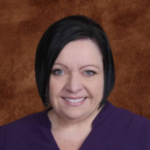Bipolar disorder, also known as manic-depressive illness, is a brain disorder that causes unusual shifts in mood, energy, activity levels, the ability to think clearly and carry out day-to-day tasks. People with bipolar experience high and low moods—known as mania and depression—which are extreme ups-and-downs in mood, energy and activity. Referred to as a mood disorder, bipolar moods range from periods of extremely “up,” elated and energized behavior (known as manic episodes) to very sad, “down,” or hopeless periods (known as depressive episodes). Less severe manic periods are known as hypomanic episodes.
The average age-of-onset is about 25, but it can occur in the teens, or more uncommonly in childhood. The condition affects men and women equally, with about 2.6% of the U.S. population diagnosed with bipolar disorder and nearly 83% of cases classified as severe.
Bipolar Disorder Untreated
If left untreated, bipolar disorder usually worsens. However, with a good treatment plan including psychotherapy, medications, healthy lifestyle, regular schedule and early identification of symptoms, many people live high-functioning, active lives with the condition.
Symptoms and their severity can vary. A person with bipolar disorder may have distinct manic or depressed states but may also have extended periods—sometimes years—without symptoms. A person can also experience both extremes simultaneously (referred to as a mixed episode) or in rapid sequence.
Severe bipolar episodes of mania or depression may include psychotic symptoms, such as hallucinations or delusions. Usually, these psychotic symptoms mirror a person’s extreme mood. People with bipolar disorder who have psychotic symptoms can be mistakenly diagnosed as having schizophrenia.
People with bipolar disorder experience periods of unusually intense emotion, changes in sleep patterns and activity levels, and unusual behaviors. These distinct periods are called “mood episodes.” Mood episodes are drastically different from the moods and behaviors that are typical for the person. Extreme changes in energy, activity, and sleep accompany the mood episodes.
| People having a manic episode may: | People having a depressive episode may: |
|
|
When symptoms present, a doctor may perform a physical examination, conduct an interview and order lab tests. While bipolar disorder cannot be seen on a blood test or body scan, these tests can help rule out other illnesses that can resemble the disorder, such as hyperthyroidism. If no other illnesses (or medicines such as steroids) are causing the symptoms, the doctor should refer to a mental health care professional for diagnosis and treatment.
To be diagnosed with bipolar disorder, a person must have experienced at least one episode of mania or hypomania. Mental health care professionals use the Diagnostic and Statistical Manual of Mental Disorders (DSM) to diagnose the “type” of bipolar disorder a person may be experiencing. To determine what type of bipolar disorder a person has, the mental health care provider will assess the pattern of symptoms and how impaired the person is during their most severe episodes.
Bipolar disorder is treated and managed in the following ways:
- Psychotherapy – cognitive behavioral therapy, interpersonal social rhythm therapy, family-focused therapy
- Medications – mood stabilizers, antipsychotic medications, possibly antidepressants
- Self-care/self-management strategies – providing structure, routine, accountability and balance to life; education and recognition of an episode’s early symptoms
- Complementary health approaches – aerobic exercise, meditation, faith and prayer can support, but not replace, treatment
A two-pronged approach to treatment is most effective with bipolar disorder. Combined with medication, psychotherapy (also called “talk therapy”) can be an essential part of treatment for bipolar disorder. Therapy can provide support, education, and guidance to people with bipolar disorder and their families. Some psychotherapy treatments used to treat bipolar disorder include:
- Cognitive Behavioral Therapy (CBT)
- Interpersonal Social Rhythm Therapy (IPSRT)
- Family-Focused Therapy
- Psychoeducation
Sources:
- National Alliance on Mental Illness (nami.org)
- National Institute of Mental Health (nimh.nih.gov)
- Diagnostic Statistic Manual of Mental Disorders: DSM-IV-TR and DSM-4


























